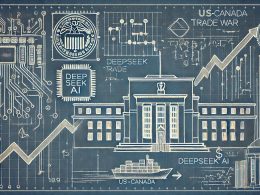by Liz Ann Sonders, Brad Sorensen, Jeffrey Kleintop, Charles Schwab and Company
Key Points
- U.S. stocks have now recovered their late-2018 losses in a sharp V-shaped move. We’re concerned that the pendulum has swung too far, too fast and we could be vulnerable for a near-term pullback. We would likely view such a move as healthy and investors should remain disciplined and diversified.
- Economic data has been healthy enough to reduce the fears of a near-term recession, but the disconnect between weak economic surprises and the recently-strong stock market may not be sustainable. Earnings season has been mixed, while trade concerns continue to hover in the background.
- China has seen some results from its recent stimulus efforts but stocks may have reacted too much in the positive direction—more time is needed to see if the stimulus efforts are really having a long-term impact on the economy (vs. just China’s stock market).
“Well, I think we tried very hard not to be overconfident, because when you get overconfident, that’s when something snaps up and bites you.”
― Neil Armstrong
Crumbling wall of worry?
It has been a stunning reversal of fortunes for U.S. stocks. The V-shaped recovery since the near-bear market in last year’s fourth quarter has put the major indexes back to or near record. But has it been too far, too fast?
Sharp recovery in stocks …but is it too sharp?

Think of how a pendulum works. Late-last year the stock pendulum arguably swung too far toward pricing in an imminent recession; but now, the pendulum may have swung too far in the positive direction, appearing to show little concern about weak global growth, a still-sluggish U.S. economy, ongoing trade uncertainty, and weak earnings. Paramount among concerns is investor sentiment. Ned Davis Research aggregates a number of well-watched sentiment indicators into its Crowd Sentiment Poll, covering both attitudinal and behavioral measures of sentiment. It has recently moved from the extreme pessimism zone to the extreme optimism zone in a very rapid fashion—barely pausing in the neutral zone. A pullback, and the pendulum moving more toward a center point, would likely be viewed as healthy. We continue to reinforce our view that investors should not get over their skis and allow equity exposure to increase so much that it changes portfolios’ risk profiles; but instead to consider periodic rebalancing. Within U.S. equities, we continue to be biased toward large-cap stocks over small-caps due to the higher debt profile among small caps, as well as the record-large percentage of profitless small cap companies.
Economy perking up?
Some of the weakness in economic data over the past quarter or two may be ebbing given they were partly due to temporary factors, like weather and the government shutdown. Notably, two concerns about slowing growth were eased when retail sales resumed their ascent and unemployment claims resumed their descent, as you can see in the charts below.
Retail sales post nice rebound

While the labor market continues to look healthy

As the temporary factors moved further into the rearview mirror, first quarter gross domestic product estimates were generally been rising. In addition, the March release of the Leading Economic Index (LEI) from The Conference Board showed that the LEI finally took out its September 2018 high—albeit in a flattish trend since then (For more see Liz Ann’s Better Days: Leading Indicators Inch Back to Cycle Highs article). Estimates for first quarter real gross domestic product (GDP) began moving up last month as well. The Atlanta Fed’s GDPNow estimate for the first quarter, after plunging to a low of only 0.2% in March, had rebounded to 2.7% by the eve of the Bureau of Economic Analysis’ release today. As for the initial read on first quarter growth—remember, it will be subsequently revised several times—real GDP came in at a surprisingly strong 3.2% annualized growth rate, although 0.7 points of that growth was due to an increase in inventories, which will likely drag a bit on growth in coming quarters as those inventories are worked off.
However, the business side of the economy tells a little less rosy story. According to the Federal Reserve, industrial production fell 0.1%, confirming continued corporate caution as seen in the rolling over of corporate confidence among both small and large businesses.
But corporate confidence hasn’t rebounded

Continued trade uncertainty is likely one of the culprits of deflated “animal spirits.” We’ve been hearing about a potential imminent China/U.S. trade deal for a couple of months now, but nothing has come to fruition yet. The waiting game can create some paralysis among corporate decision makers. While we hope a deal will eventually be reached; the reality is that any number of outcomes is still possible. Worst-case scenario is that there is no deal, the additional tariffs on China are implemented and the Trump administration sets its sights on the European Union (EU) and auto-related tariffs. Best-case scenario is that a comprehensive deal is struck addressing most/all of China’s most egregious trade practices with appropriate enforcement and monitoring. Of course, there is a lot of room in between these scenarios as well. Our view is that the market has priced in some semblance of a deal; and that there is upside “risk” if it’s a stronger-than-expected deal, but downside risk in a no deal scenario. The aforementioned possibility of an escalating dispute with the EU—along with the increasing possibility that the USMCA (former NAFTA) doesn’t get ratified by Congress—keeps us in the cautious camp. We don’t believe investors are factoring those possibilities into their investing theses; and the potential for a trade surprise or two could result in added volatility.
Finally on the corporate front, first quarter earnings season has been relatively well-received to this point. The “beat rate” to-date has been 77%, which is above the long-term norm; while blended estimates (actual reports combined with estimates for earnings not yet reported) have inched out of negative territory and stand virtually flat on a year-over-year basis. On the other hand, revenues—which are more difficult to manipulate—have been less inspiring, with a beat rate of only 56%; indicating a bit more challenging environment than the headline earnings numbers may be suggesting (earnings data and estimates from Refinitiv).
Fed change?
The Federal Reserve is likely to hold interest rates steady at its meeting next week; and with the market pricing in better chances of the next move being a rate cut, monetary policy has turned from a headwind to a tailwind. In keeping with that, it’s interesting that during the first 15 months or so of Fed tightening, there was a sharply-positive correlation between economic surprises and the stock market, as you can see in the first chart below comparing the Citi U.S. Economic Surprise Index to the S&P 500. But as seen in the second chart, during the past 15 months or so, that correlation has completely reversed, with stocks now “cheering” weaker economic news—likely because of what it suggests for monetary policy. Frankly, we’re not sure that negative correlation is sustainable.
Is the divergence sustainable?
Also interesting lately has been the apparent softening of the Fed regarding their implied 2% target level of inflation. Several voting members, including Charles Evans and Eric Rosengren, have expressed the desire to let inflation run hotter than 2% for an extended period, believing that 2% should be more of an average than a target over the course of a business cycle (Reuters). While that may sound appealing in this low inflation environment, we remain a bit concerned that the tight labor market—especially if the economy accelerates out of its soft patch—could lead to an uptick in inflation. If the Fed were to move toward this more flexible view of inflation, it would increase the chances the Fed might get behind the curve. This is not an imminent problem, but not something to keep on the radar screen.
Has China’s economy rebounded?
An additional factor in the recent rally in U.S. equities has likely been the perceived rebound in Chinese economic activity. But what are we really seeing in China? At a meeting of China’s Central Committee of Finance and Economics this week, chaired by President Xi Jinping, leaders emphasized deepening structural reform and deemphasized additional economic stimulus (Reuters). Why would China cut back on stimulus now after only early signs that the economy is stabilizing? Perhaps it’s because of where that stimulus has been going.
After a 40% first quarter surge in new financing, business fixed asset investment was up only 6.3% at the end of the first quarter compared to a year ago (Reuters). At the same time China's stock market is up over 25%, as measured by the Shanghai Composite Index. That means the new loans may be doing little to boost economic growth and are instead flowing into the stock market, potentially creating a bubble. This poses a risk to the partial recovery in emerging market (EM) stocks this year, which has been led by China since early February, as you can see in the chart below. Chinese stocks make up about one-third of the MSCI EM index.
Emerging market stocks led by China this year

Source: Charles Schwab, Bloomberg data as of 4/23/2019. Past performance does not guarantee future results.
The stock market isn’t the only thing that is up; with China’s industrial production surprisingly strong in March. Manufacturing also saw a sharp bounce as you can see below, confirmed by a strong purchasing managers index (PMI) report for March. However, the data may have been distorted by the shift in the Chinese New Year holiday.
March saw a spike in manufacturing activity in China

Source: Charles Schwab, Bloomberg data as of 4/22/2019.
China’s economy may be stabilizing, but the strength and durability of any recovery may fall short of the “V” shape that stock market investors seem to be pricing in. China’s leading economic indicators are mixed at best while coincident (current) economic indicators remain soft (with the exception of industrial production, which flipped from weak to strong due to the spike in March). We can see this in the table below of the indicators that make up both the leading and coincident indicators for China from The Conference Board, an economic think tank. The Conference Board defined March of 2018 as the most recent peak in China’s economy, and it has yet to turn back up.
A trade deal with the United States is unlikely to turn around China’s economy. The new export orders component of the PMI manufacturing data is a leading indicator for exports. As seen in the table, it is at a level consistent with stable to slightly slower growth. A trade deal which removes some higher U.S tariffs on Chinese goods could have a positive impact on Chinese exports. However, China’s exports to the United States have continued to grow despite the tariffs, so any rebound in exports upon reaching a trade agreement may be modest. A greater factor may be the economies of China’s major trading partners which have continued to weaken, as indicated by their PMIs.
Volatility in the year-over-year comparisons of economic data resulting from the shift in the Chinese New Year holiday makes it hard to determine underlying strength. At least a couple more months of data are needed to determine whether the economy has found stable footing. We will be watching to see whether the current stimulus-driven economic stabilization transitions into a self-sustaining recovery in the absence of new stimulus.
So what?
U.S. equity market gains since the Christmas Eve 2018 low have been impressive, and we don’t think a recession is in the near-term future—but sentiment is extended and investors should be cautious about chasing gains at this point; either in the United States or emerging markets. A near-term pullback would likely be healthy and could afford a better opportunity for investors who are looking to add equity exposure. On the other hand, those investors whose portfolios are now holding an outsized equity allocation could use the latest strength to rebalance back toward targets.
Copyright © Charles Schwab and Company














